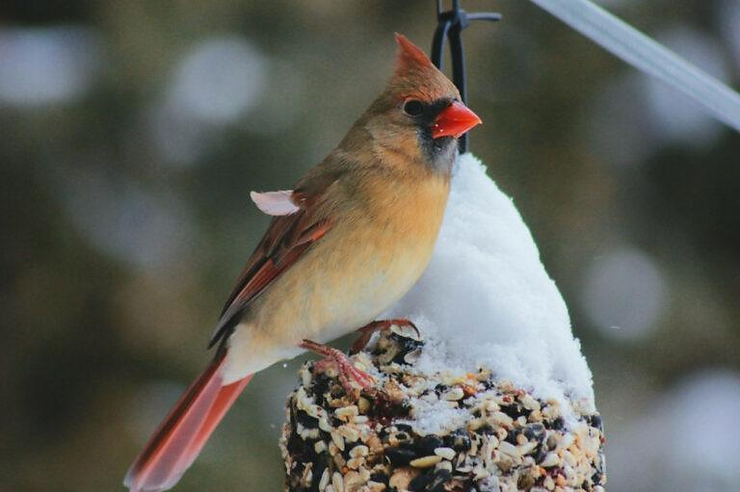One of the most delightful sights in winter is watching the many varieties of birds in my backyard. It’s rather easy to attract birds, especially in the colder months, if you properly meet the needs of these fine feathered friends. Read on to learn how to attract birds in winter and pick up some other useful tips.
(Some of the links within this post are affiliate links on which I receive a small compensation from the sale of certain items.)
(As an Amazon Associate I earn from qualifying purchases.)
How to Attract Birds in Winter
Scarce food, extreme temperatures, and fierce winds and storms all add up to devastating conditions for wild winter birds. Although many species are used to these harsh conditions, they still are susceptible to starvation and death. In fact, the highest mortality rate for birds is during the winter. For all those who enjoy caring for and observing birds, providing these beauties with the correct environment will reward you with many hours and days of enjoyment.
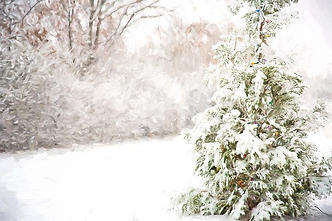
Invitation
Start preparing your yard for the winter months early in the fall to attract a variety of wild birds. Plant native evergreen and deciduous trees along with shrubs throughout your yard. They will provide shelter, protection and food.
Evergreen trees are a cozy haven for birds sheltering from the cold winds. If you have a live Christmas tree, rather than placing it on the curb for pickup why not prop it up outside to provide a landing perch for your winter visitors?
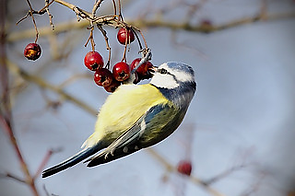
Shrubs with berries such as junipers, winterberry, and beautyberry offer a different cuisine for birds. The Eastern Bluebird, Sharp Tailed Grouse and Cedarwing in particular enjoy these types of berries.
Trees such as Hawthorns, Crabapples, and Hollys with countless berries provide an abundance of food for winter birds.
Leaving leaf litter in your yard will furnish the birds with warmth and protect them from predators.
Food
In addition to the trees and bushes you have in your yard, supply some of the following bird seed (Sold on Amazon) in different feeding containers. The more variety you have, the better to attract a large, diverse, group of birds.
Below is a list of cold-weather cuisine.
High in Oil and Fat:
- black oil sunflower seeds
- hulled peanuts or peanut hearts
- suet mixes with seed or fruit
- peanut butter
Other Suggestions:
thistle seed (Found on Amazon)
white millet seed
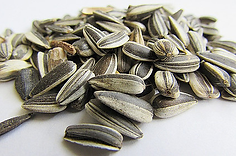
A good place to purchase these seeds is at your local Agway store or even a supermarket.
If you live on a migration path for hummingbirds, refer to What Flowers Attract Hummingbirds.
One unique way for feeding the winter birds is coating pine cones in peanut butter and seed and then hanging them on a tree limb.
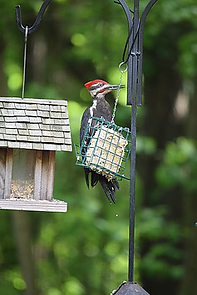
Suet containers filled with protein packed suet provide much needed oils and fats for the birds to maintain body weight and heat. It is a high energy fat substance that all birds need in the winter. However, offer the proper suet for your location. There are specific suet blends for cold temperatures and warm temperatures. Once the weather turns warmer, throw out your suet because it will go rancid and moldy.
Try making your own suet.
Edible birdhouses (Amazon) are another unique way to feed your birds.
Water
Like humans, birds need water to survive. The berries provide fluids for their diet, however, a heated bird bath would be welcomed by winter birds, especially if there is no snow on the ground.
Heated birdbaths (Found on Amazon) have an internal heating element controlled by an automatic internal temperature gauge. It turns on if the temperature drops below 32 degrees Fahrenheit. It turns off when the temperature rises above 32 degrees Fahrenheit.
The heated birdbath is not harmful to birds, however it could be dangerous for the birds to take baths if the temperature dips into the single digits or below.
Always keep the water level high so the internal heater does not malfunction.
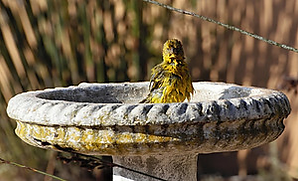
Change the water frequently to keep it fresh and clean and prevent diseases.
Shelter
Supply your backyard with the appropriate shelter to protect your birds from fierce north winds (in the northern hemisphere) or fierce south winds (in the southern hemisphere). Birds also need to be sheltered from snow, hail, and sleet.
Some shelters include bird roost boxes, winter bird shelters, bird houses, or houses made from gourds. Refer to Unique Garden Ideas on how to build your own gourd house.
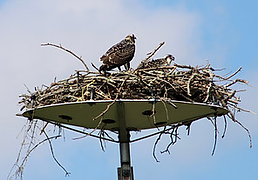
Build a brush pile with some of the following elements so the birds can insulate their own homes.
- spent leaves from the fall
- loose hay
- dead twigs
- dry grass that hasn’t been treated with pesticides
- feathers
- pine needles
- bark
- bark strips
- cattail fluff
- down cotton
- moss
You DO NOT want to add dryer lint, plastic, cellophane, aluminum foil or tinsel to the mix. These are harmful to the birds.
Safety Tips
Safety for your fine feathered friends is a necessity. Here are just a few tips to keep the birds safe and healthy.
1. Clean your bird feeders and baths regularly.
2. Position the bird feeder to protect the birds from hawks. Place them where it would be difficult for a large hawk to perch on the bird feeder or bath.
3. Supply plants or brush piles for immediate safety.
4. Keep domestic cats indoors and take steps to protect birds from stray or feral cats.
5. Put a bell on your cat if he/she goes outdoors to forewarn the birds of the predator. Inspect for cat paw prints.
6. Place your bird feeders high so the birds do not make for easy prey.
7. Clean up spilled seed frequently to prevent birds from eating from the ground.
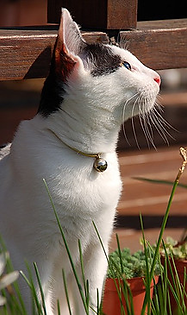
8. Use plastic or metal poles to prevent cats from climbing the support to your bird feeder or bird house.
9. Prevent window collisions by using window clings.
Those Darn Squirrels!
Anyone who has a bird feeder and squirrels will know how difficult it is to prevent squirrels from eating your bird seed. Squirrels have a ravenous appetite and can clear out a full bird feeder in no time. Here are a few suggestions to keep those critters from your birds’ dinner table.
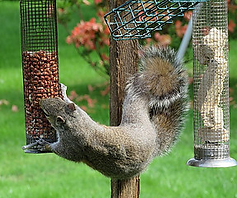
1. Invest in a squirrel resistant pole with a spring baffle (Amazon), one that is manufactured to prevent squirrels from climbing up.
2. Place your feeder 10 feet away from any tree limbs or structures.
3. Squirrels can jump horizontally up to 10 feet.
4. Purchase a squirrel proof bird feeder.
5. Buy a feeder with weight sensitive perches. Birds are much lighter than squirrels and will not trigger the perch to collapse.
5. Purchase a battery powered feeder that spins (Amazon) when a squirrel jumps on it. This is very funny to watch!
6. Fill your feeder with foods squirrels dislike. For instance, white proso millet, nyjer seed, and safflower seed.
7. Use hot pepper powder to deter squirrels. The ingredient that causes heat on our pallet is called capsaicin. Squirrels, humans, and other mammals are sensitive to this. Birds are not. They sell specific bird seed that’s coated with a powder or liquid of capsaicin. Also, some suet contains capsaicin.
8. Use a separate feeder for your squirrels.
9. Do not harm the squirrels. They’re hungry too!!
Click her for a review on squirrel deterrent bird feeders.
Final Thoughts
Winter is a wonderful time of year, especially when the temperatures are consistently low. You may be stuck inside your cozy surroundings but take some time to enjoy and observe the beauty outside. If you supply good eats, a drink of water, shelter and safety in your backyard, you will be rewarded with frequent visits from a delightful variety of fine feathered friends.
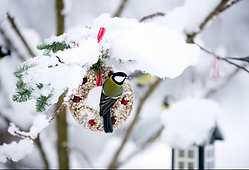
I hope you learned a thing or two from this article. Please share it with others and enjoy nature.
I’d love to hear from you. Please leave a comment below.
Happy Gardening,
Nina
bestgardeningforbeginners@gmail.com

